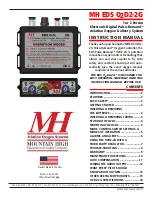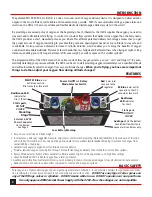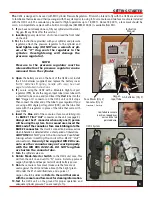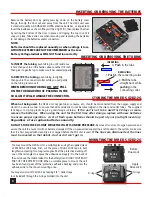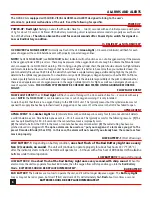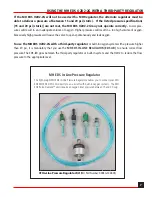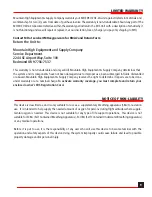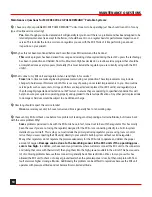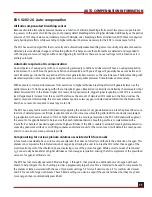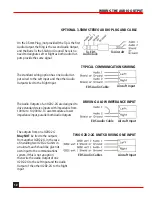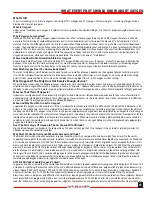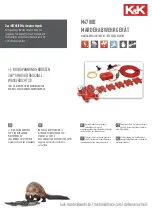
14
14
less. The pilot may be on the verge of complete collapse. Therefore, the availability and use of supplemental oxygen is recommended on
night flights where altitudes above 5,000 feet are contemplated, and for altitudes above 8,000 feet on daytime flights.
How Can You Tell When You Need Oxygen?
You can’t; therefore, oxygen should be used before it is needed. The most dangerous aspect of hypoxia is the insidious, “sneaky” nature of
its onset. Because the effects of hypoxia are primarily on the brain and nervous system, there is a gradual loss of mental faculties, impair-
ment of judgment, coordination, and skill; but these changes are so slow that they are completely unnoticed by the individual who is being
affected. Actually, a person suffering from mild or moderate hypoxia is apt to feel a sense of exhilaration or security, and may be quite proud
of his or her proficiency and performance although he or she may be on the verge of complete incompetence. Because hypoxia acts upon
the brain and nervous system, its effects are very much like those of alcohol or of other drugs which produce a false sense of well-being.
There is a complete loss of ability for self-criticism or self-analysis. Some people believe that a pilot can detect his or her need for oxygen by
noting an increase in breathing rate, an accelerated heartbeat, and a slight bluish discoloration (cyanosis) of the fingernails. However, by the
time these symptoms develop, the individual is more likely to be mentally incapable of recognizing these signs. The person may even decide
that he or she has always wanted blue fingernails! Even while “spiraling” out of control, the individual may be convinced (if conscious at
all) that he or she is doing this deliberately and enjoying it immensely
Are All Individuals Equally Affected By Hypoxia?
No, they are not. Just as there is a variation among individuals in their ability to tolerate heat, cold, or alcohol, some people can tolerate
without apparent effect a degree of hypoxia which would have noticeable effects on others who are more susceptible to the lack of oxygen.
There is no way to measure and predict hypoxia tolerance because it can be affected by physical condition, fatigue, emotion, tobacco, alco-
hol, drugs, diet and other factors. The individual who has flown at 14,000, 16,000, or 18,000 feet without oxygen and survived has no idea
how close he or she may have been to disaster. The person may believe that all this talk about oxygen need, if true at all, does not apply to
him or her. Such a belief may some day be fatal.
Is It True That Oxygen Is Toxic Or Harmful?
Oxygen therapy is often used for prolonged periods in hospitals and homes not with harmful, but definitely beneficial effects. It is most
generally agreed that a 60% oxygen concentration on the ground, which is equivalent to a 100% oxygen concentration at approximately
12,000 feet, will not cause any harmful effects.
Why Not Use Oxygen Intermittently For Short Periods?
If one is at an altitude where there is an oxygen deficiency, intermittent use of oxygen would only temporarily alleviate the hypoxic effects
during the period in which oxygen is being used. Because of the insidious nature of hypoxia, a person already mildly hypoxic is very unlikely
to even think of using oxygen equipment, either intermittently or otherwise. It is true that occasional use of oxygen for five or ten minutes
(even at altitudes below 8,000 feet) can act as a “refresher” to relieve the effects of mild hypoxia, cigarette smoke, apprehension, or other
factors. Also, the use of oxygen for five or ten minutes before the termination of a flight (even though the entire flight may have been flown
at less than 8,000 feet) can be an excellent tonic to put the pilot in his or her best mental and physical condition for the approach proce-
dures and landing maneuvers.
How Will Oxygen Equipment Improve The Utility Of The Airplane?
With oxygen equipment aboard, the pilot can choose the higher altitudes which give the smoothest flight, the most favorable winds, the
best performance from the Omni and other radio navigation equipment, the highest speed, the longest range, and the best engine perfor-
mance. The pilot can have these advantages safely with oxygen because his or her own performance will not be affected by hypoxia; he or
she will be just as efficient and capable as at lower altitudes or even on the ground. With oxygen equipment in use, pilot and passengers
will arrive at their destination fresh and fit, without the headache, lassitude, and fatigue which often result from prolonged exposure to even
mild hypoxia.
What Types Of Oxygen Equipment Are Available For Private And Executive Aircraft?
There are a variety of types, including portable MH EDS “Pulse-Demand” units which can be carried along when flight at hypoxic altitudes is
anticipated. If flights at such altitudes are frequent, then a “built-in” oxygen system offers some advantages, especially in the larger aircraft.
For either portable or built-in systems there is a choice between “Pulse-Demand” type and “Continuous Flow” type equipment. “Pulse-De-
mand” type equipment automatically delivers oxygen to the user during each inhalation in response to his or her own breathing pattern and
altitude. The continuous flow type system delivers oxygen at a fixed rate to an accumulator bag which is attached to the mask, and from
which the user inhales each breath. The Pulse-Demand is the most efficient.
How Should An Oxygen System Or Equipment Be Selected?
Your MH Sales Engineer can help you at 800-468-8185. He or she can assist the pilot in selecting the system best suited to the specific
airplane and the pilot’s special needs.
WARNING:
Improper use or improper maintenance of aviation oxygen equipment may result in serious injury or death.
Aviation oxygen equipment is intended to be used only for aviation applications and is to be used only
by, or under the supervision of, a pilot or crew member trained and qualified in its use. Aviation oxygen
equipment is to be serviced only in accordance with the applicable component maintenance manuals from
MH Oxygen Systems and only be serviced by technicians trained in the inherent hazards of high pressure
aviation oxygen and knowledgeable of this equipment. Aviation oxygen equipment is to be used only with
oxygen meeting the requirements of MIL-PRF-27210
WHAT EVERY PILOT SHOULD KNOW ABOUT OXYGEN

